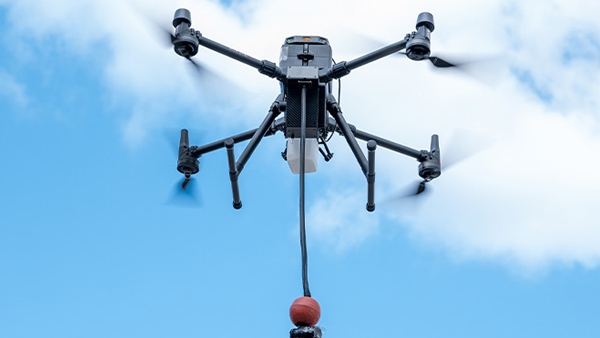For environmental researchers and water quality professionals, traditional water sampling methods can be time-consuming, expensive, and limited by accessibility. Enter the innovative world of drone-based smart water sampling systems! These systems, like the Speedip, offer a revolutionary approach to collecting water samples, transforming how we monitor our precious water resources.
The Speedip system is a prime example of this cutting-edge technology. This intelligent system, designed specifically for drone-based water sampling beyond visual line of sight (BVLOS), boasts impressive features:
Speedip can collect up to 2 litres of water in a single dip, providing a substantial sample volume for detailed analysis.
Despite its large capacity, Speedip remains remarkably lightweight – even with a full 2-litre container, the total weight stays under 2.7 kilograms. This ensures smooth integration with drones like the DJI M300 RTK.
Forget lengthy setup procedures. Speedip can be mounted or dismounted from your drone in a mere 10 seconds, maximizing your time in the field.
Gone are the days of manual retrieval. Speedip offers one-touch automatic sampling at your designated depth, simplifying the process and minimizing human error. For more control, semi-automatic and manual modes are also available.
Equipped with a high-resolution millimetre wave radar, Speedip detects water surface distance with unmatched precision down to 1 millimetre. No more guesswork – you’ll know exactly where your sample is coming from.
Collecting water samples at dawn or dusk? Speedip’s built-in 180° night vision camera allows you to navigate and observe the environment with ease, even in low-light conditions.
Cloud-based mission synchronization streamlines your workflow. Track mission data in real-time, log information and review details later with ease.
Speedip facilitates multi-user collaboration. Operators can access mission details and data through both the DJI Pilot app and the Speedip web platform.
The advantages of drone-based water sampling extend far beyond efficiency. These systems allow access to remote areas previously inaccessible by traditional methods, enabling researchers to collect data from critical ecological zones. Additionally, the use of drones minimizes human intervention, reducing potential contamination risks and ensuring pristine sample collection.
Drone-based smart water sampling systems like Speedip represent a significant leap forward in water resource monitoring. These innovative solutions offer increased efficiency, improved data accuracy, and access to previously unreachable locations. As this technology continues to evolve, we can expect even more advancements that will revolutionize the way we collect and analyze water samples, ultimately leading to a better understanding and protection of our most vital resource.
Credits: this article is extracted from:https://drones.measurusa.com/blogs/news/drone-based-water-sampling?shpxid=654d530a-1c23-4623-9baf-4a9b569d8b79


